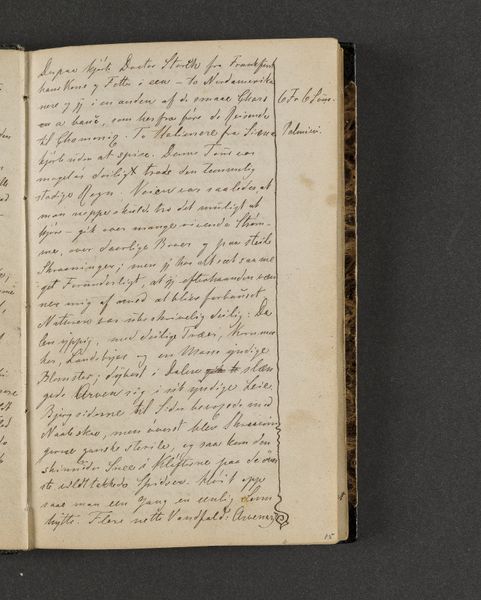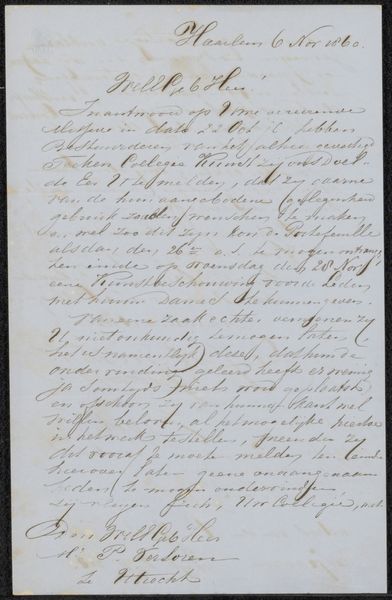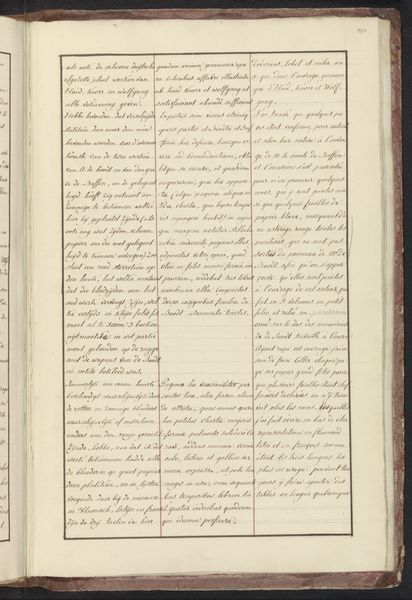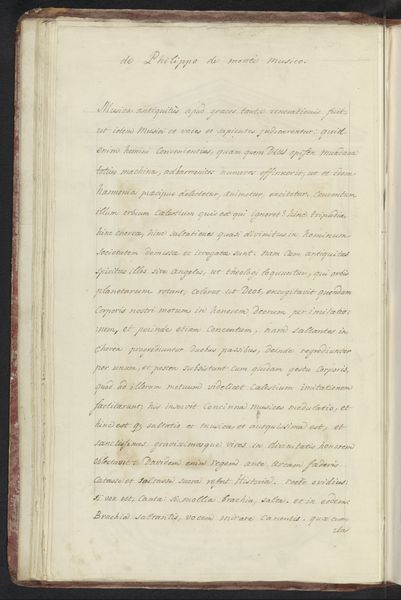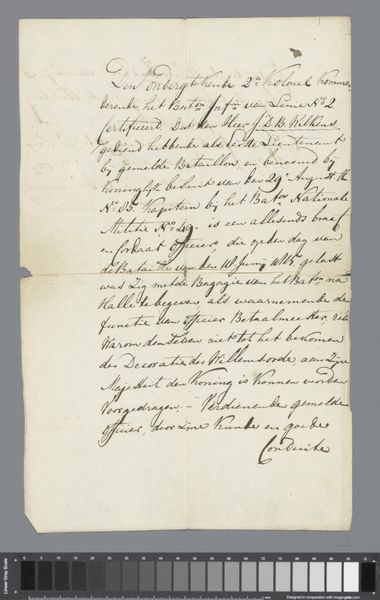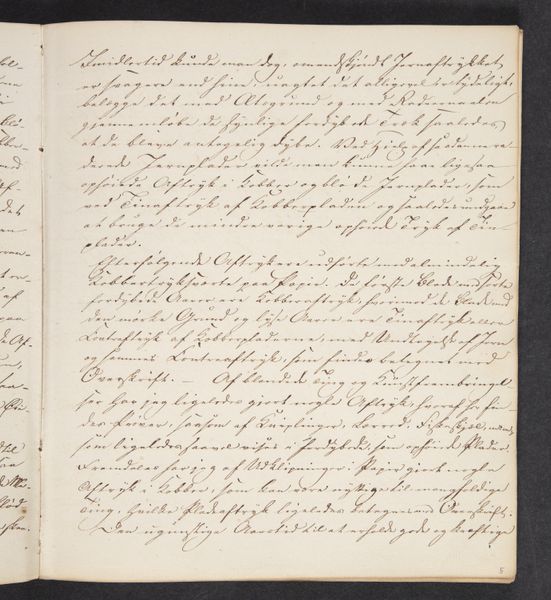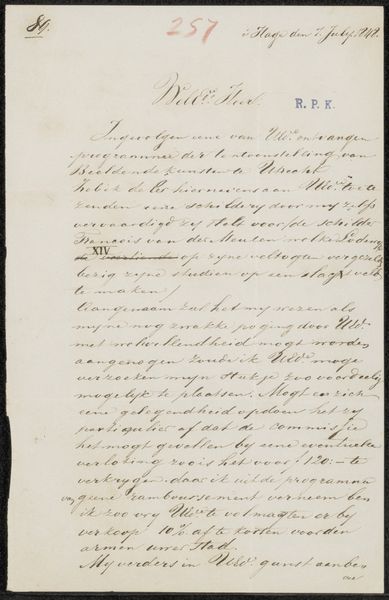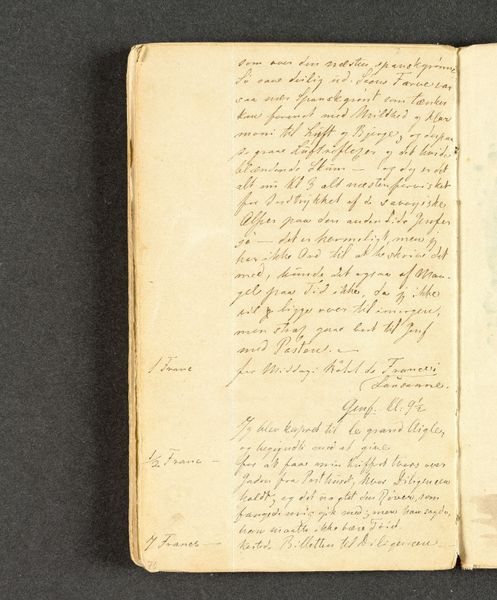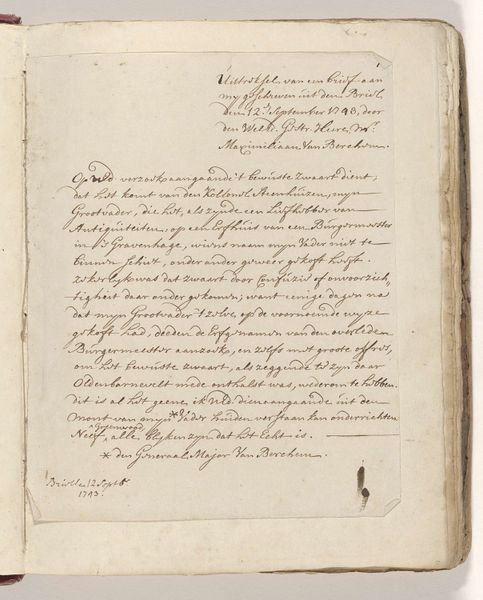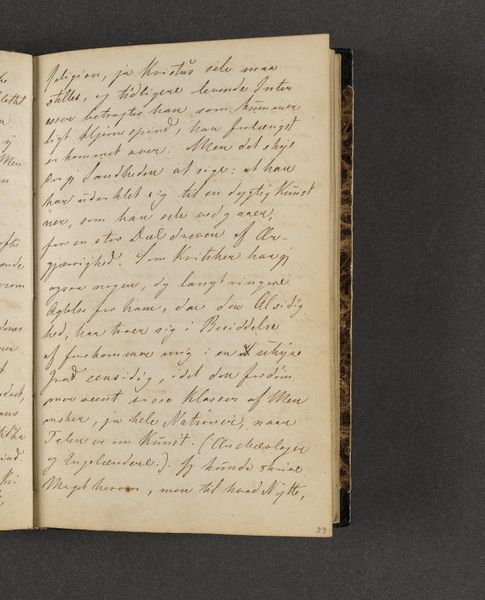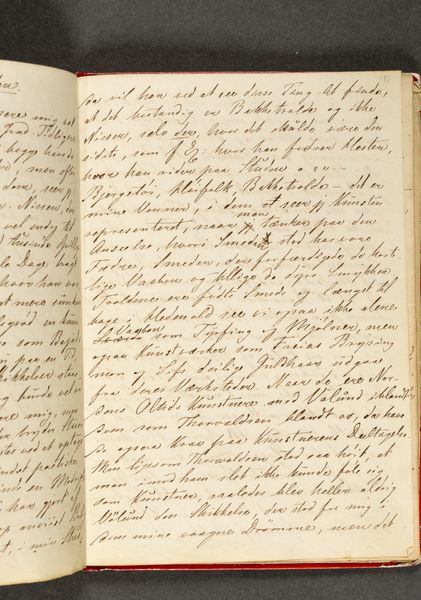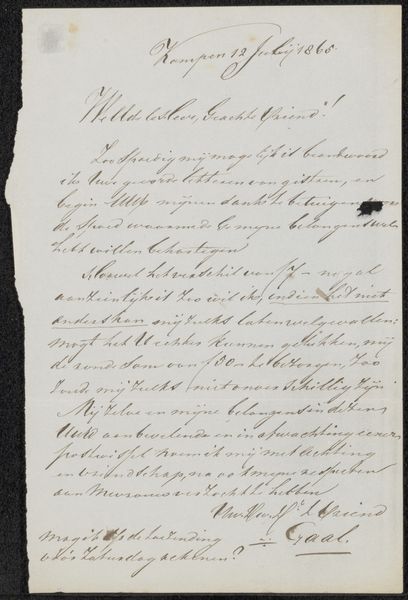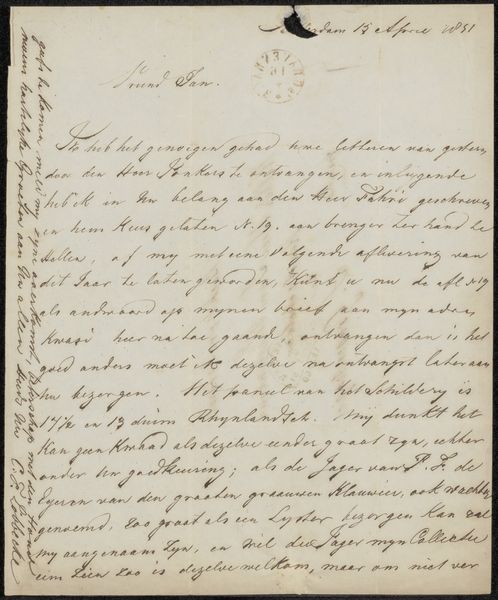
Notarieel afschrift uit 1786 over het epitaaf van Jan de Boodt en Elisabeth de Hondt en Jacob de Boodt 1786
0:00
0:00
drawing, paper, ink
#
drawing
#
paper
#
ink
#
history-painting
Dimensions: height 430 mm, width 270 mm
Copyright: Rijks Museum: Open Domain
Editor: So, here we have a page from 1786 entitled "Notarieel afschrift uit 1786 over het epitaaf van Jan de Boodt en Elisabeth de Hondt en Jacob de Boodt", a notary document, it seems. It's made with ink on paper, a drawing of sorts… or maybe more like a historical record? I’m immediately struck by the script; it feels like a window into another time. What can we read into images like these? Curator: I'm intrigued by the visual language within this document. Consider, the formalized script; its consistent strokes meant to convey authority, truth. Legal documents throughout history employed visual strategies – think seals, emblems, carefully chosen fonts – to project legitimacy. Isn't the choice of handwriting itself, rather than, say, print, significant? It suggests a human element, a personal bond to the agreement. And what of the drawing's existence within this framework? Editor: So, it's not just the *information* being conveyed, but the *way* it's conveyed. The care taken in the penmanship is symbolic? Curator: Precisely! Even the physical imperfections, the smudges and tears in the paper… they become part of the story, signs of age, use, and survival. They offer a powerful visual reminder of the passage of time and the endurance of memory, personal and collective, contained within that writing. Editor: It’s incredible to think about how much our reading of something changes just by thinking about the medium. Curator: Indeed! Forms carry so much meaning, especially from the past. Now imagine holding this fragile piece of paper… How might it speak to you then? Editor: I'll never look at old documents the same way. Thank you.
Comments
No comments
Be the first to comment and join the conversation on the ultimate creative platform.
